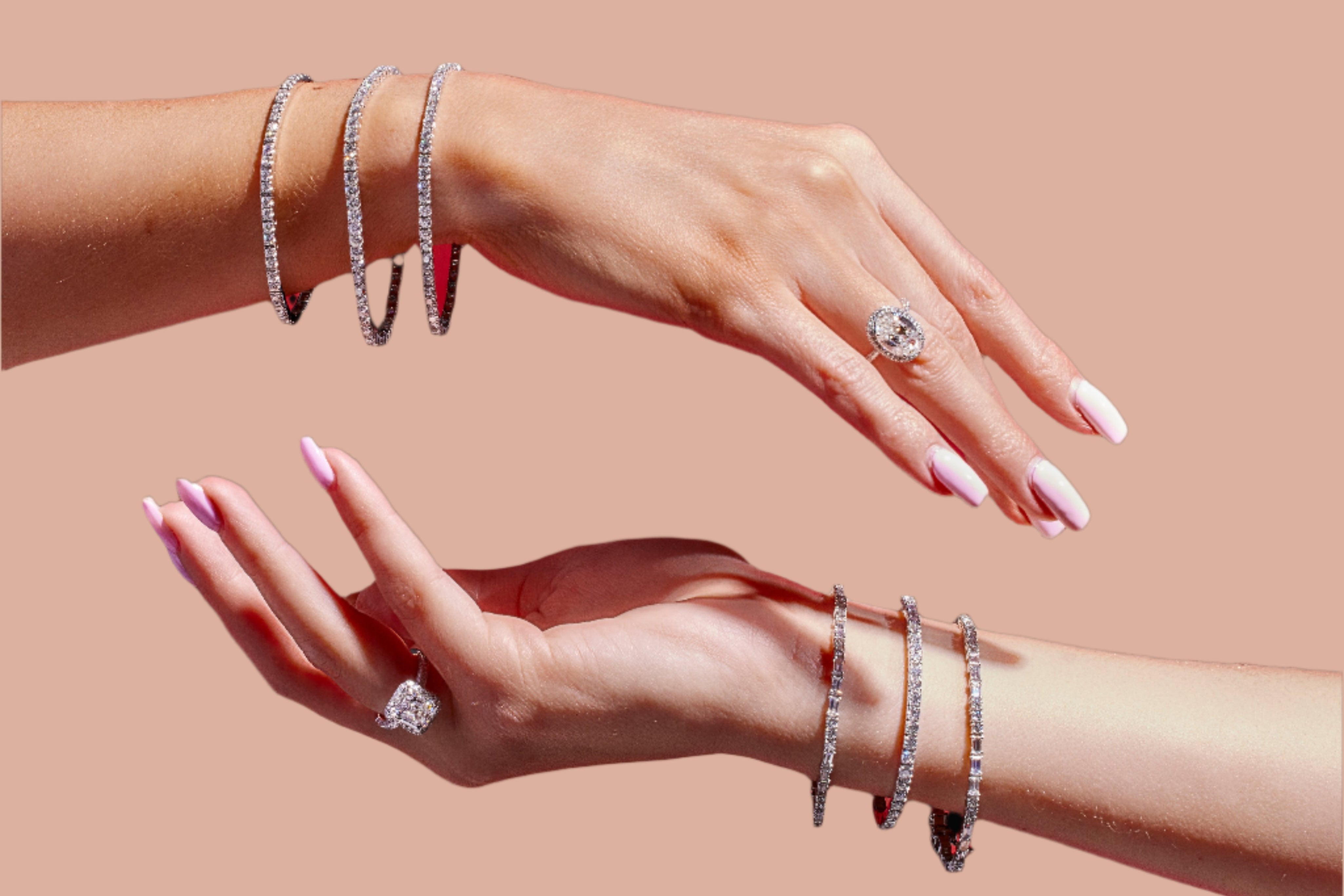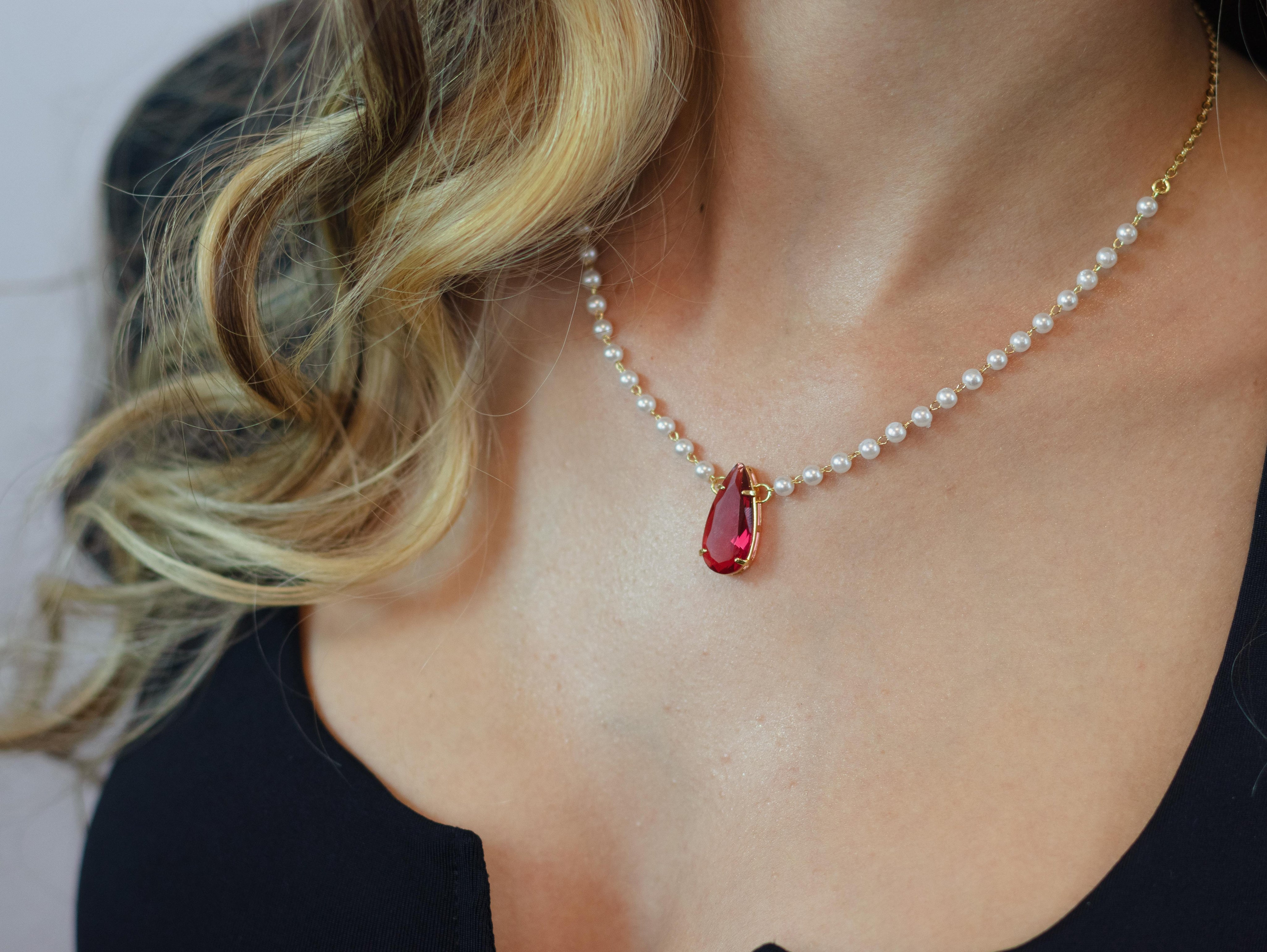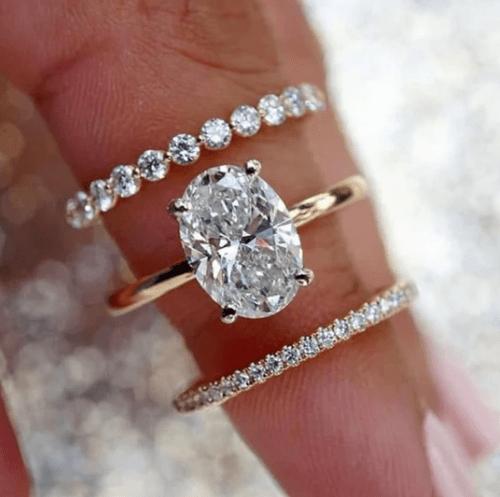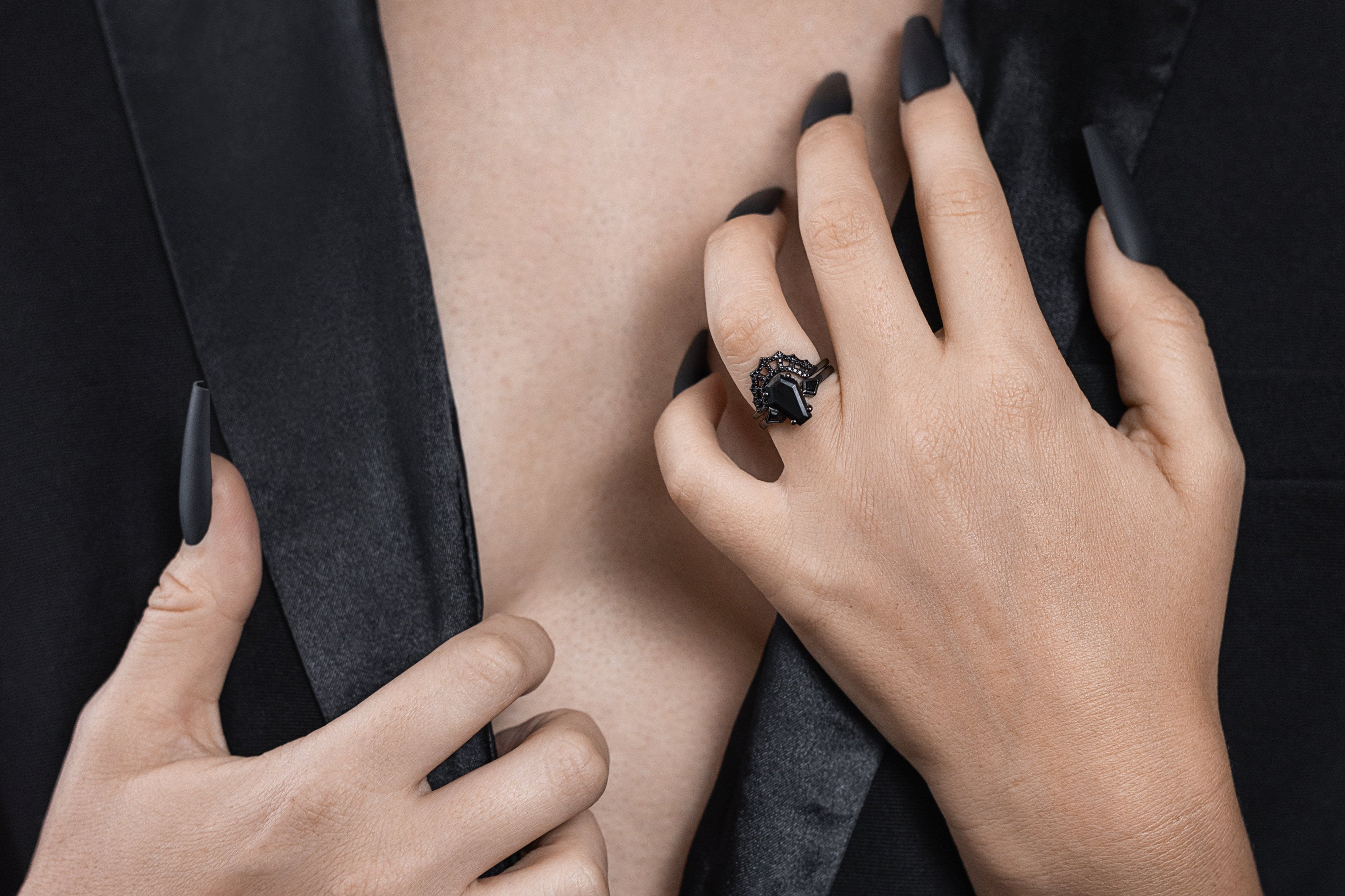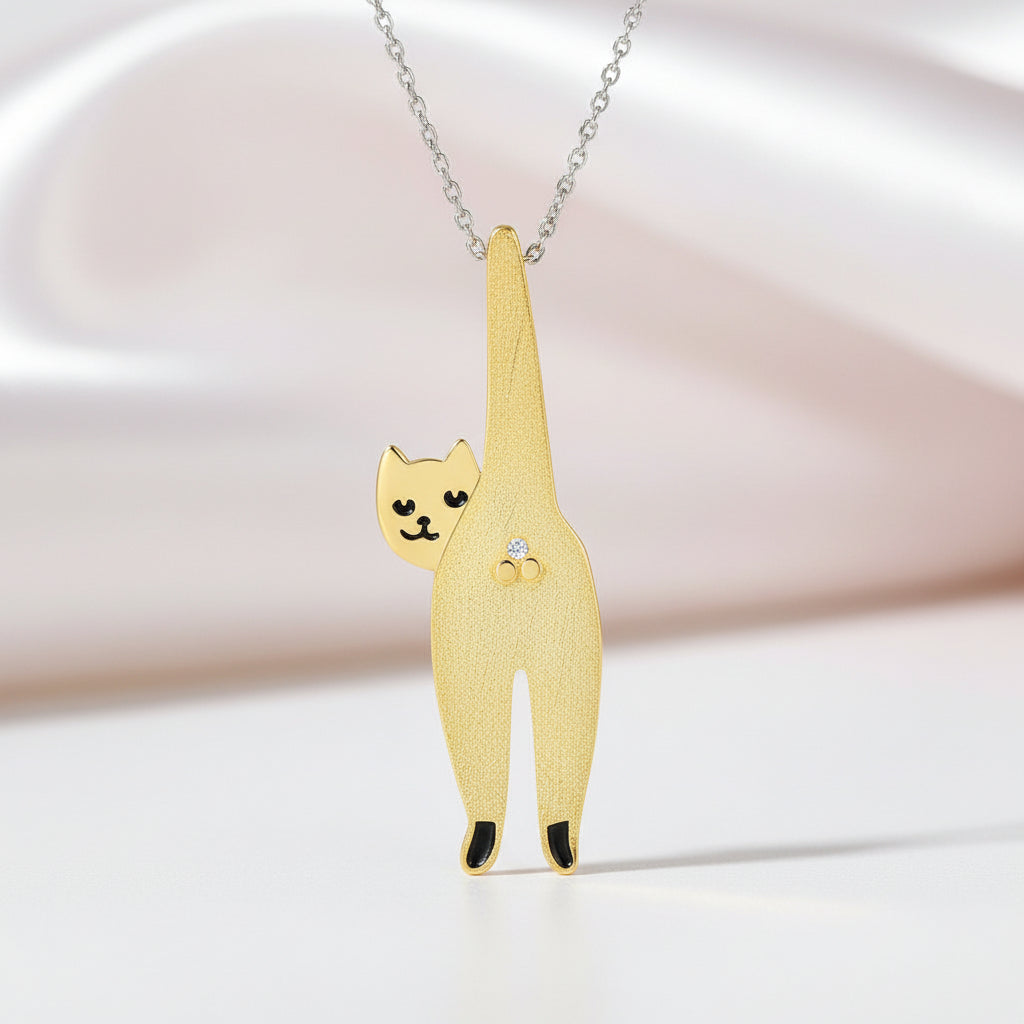The Shiny New Standard: Why Sona Simulated Diamonds are Taking Over

In an age where technology and innovation seem constantly evolving, it's no surprise that the diamond industry is also changing. In recent years, simulated diamonds (also known as "lab-grown" or "cultured") have been growing in popularity, and for a good reason. Simulated diamonds offer all the beauty of natural diamonds but at a fraction cost. And with advances in technology making them more and more indistinguishable from natural diamonds, there's no doubt that simulated diamonds are the future of the diamond industry.
One of the latest innovations is sona simulated diamonds. With their stunning clarity and impressive fire, sona simulated diamonds quickly become the go-to choice for engagement rings, anniversary gifts, and more. If you are looking for an affordable option for jewelry, visit our website, Black Diamonds, New York, for all of your jewelry needs. So why should you choose a sona diamond? What are they, and why are they growing in popularity? Keep reading to learn more.
What are Sona Simulated Diamonds?
Sona simulated diamonds are created using cutting-edge technology that makes them virtually identical to natural diamonds.
Simulated diamonds are made using one of two methods: high pressure, high temperature (HPHT), or chemical vapor deposition (CVD). In the HPHT method, a tiny seed diamond is placed in a chamber with a mixture of gasses and metals. The chamber is then heated to extremely high temperatures and pressures, causing the gas molecules to break down and deposit onto the seed diamond. In order to reach the appropriate size, this process is repeated.
The CVD method involves placing a diamond seed in a chamber containing a carbon-containing gas. The chamber is then heated to a very high temperature, causing the gas molecules to break down and deposit onto the seed diamond. Until the desired size is attained, this process is repeated as well.
What Is the Difference Between Lab-Grown and Simulated Diamonds?
While lab-grown and simulated diamonds may look similar to the naked eye, there are some critical differences between the two. Modern technology is used in a controlled environment to produce lab-grown diamonds. Simulated diamonds, on the other hand, are artificial materials that only mimic the appearance of natural diamonds. Regarding hardness, both lab-grown and simulated diamonds rank a nine on the Mohs scale. However, lab-grown diamonds tend to be more flawless than their natural counterparts and less expensive. In terms of durability, simulated diamonds are slightly less resistant to heat and scratching than lab-grown diamonds. Ultimately, choosing a lab-grown or simulated diamond is a matter of personal preference.
Benefits of Sona Simulated Diamonds
So what are the benefits of sona simulated diamonds? Here are a few of the reasons why they're taking over the diamond industry:
Affordability
Simulated diamonds are more affordable than natural diamonds because they are created in a laboratory rather than mined from the earth. Throughout millions of years, deep under the earth's crust, natural diamonds are created, and then volcanic eruptions bring them to the surface. Mining and extracting diamonds is expensive and time-consuming, contributing to the high price of natural diamonds. Simulated diamonds, on the other hand, are produced using cutting-edge technology that may mimic the conditions under which natural diamonds originate. As a result, simulated diamonds have the same physical and chemical properties as natural diamonds but are much more affordable. Whether you're looking for an engagement ring or a fashion statement, simulated diamonds offer a more budget-friendly option.
Variety
When most people think of diamonds, they envision the classic clear stone. However, diamonds come in a wide range of colors, from canary yellow to vivid blue. And thanks to modern science, it's now possible to create simulated diamonds that exhibit even more color than natural diamonds. This broader color palette means simulated diamonds are more versatile than ever before, making them a popular choice for anything from engagement rings to fashion jewelry. And because they're created in a laboratory, simulated diamonds can be produced in large quantities, providing consumers with more excellent choices and affordable prices. Whether you're looking for a traditional diamond or something with a unique hue, simulated diamonds offer unparalleled variety.
Durability
Simulated diamonds are more durable than natural diamonds. Simulated diamonds are made of Cubic Zirconia which is 8.5 on the Mohs hardness scale, and natural diamonds are only a ten on the Mohs hardness scale. That might not seem like much of a difference, but it is. The difference in hardness means that simulated diamonds are harder than natural diamonds and less likely to scratch, chip, or dull. They also don't need special care and can be cleaned with any number of commercial jewelry cleaners.
In contrast, natural diamonds require specialized care and cleaning products. They must be cleaned with mild dish soap, and water solution, then rinsed thoroughly and dried with a soft, lint-free cloth. Any other cleaners will damage the diamond's surface.
Environmentally Friendly
Simulated diamonds are created in a laboratory and therefore do not require natural mining resources. In addition, they are often made with recycled materials. As a result, simulated diamonds have a much smaller carbon footprint than natural diamonds. And because they are artificial, simulated diamonds can be produced in various colors and sizes to meet each customer's specific needs. With so many benefits, it's no wonder that simulated diamonds are becoming increasingly popular.
Why Choose Sona Simulated Diamonds?
Sona simulated diamonds offer all the same benefits as natural diamonds but at a fraction of the cost. Because they're created in a laboratory, sona simulated diamonds don't carry the same price tag as natural diamonds.
In addition, sona simulated diamonds are eco-friendly and conflict-free. They're created in a controlled environment where there's no risk of damaging the earth or harming miners. So, if you're looking for a beautiful diamond that won't break the bank or harm the environment, sona simulated diamonds are the way to go.
How To Differentiate Between Diamonds and Sona Simulated Diamonds
There are two primary types of diamonds: natural and simulated. Natural diamonds are created by nature, while simulated diamonds are artificial. Both have their own benefits and drawbacks, so it's essential to know the difference before making a purchase. Here are some key points to keep in mind when differentiating between diamonds and sona simulated diamonds:
Fire
A diamond's unique optical properties are due to its highly structured atomic lattice. This structure produces extraordinary brilliance and fire. When looking at a diamond, you should see a bright white light with a hint of yellow. If the diamond has a strong yellow or brown tinge, it is likely a sona simulated diamond. The best way to determine a diamond's quality is to consult a certified gemologist. With their expert eye, they can identify flaws or inclusions that may affect the stone's value. So, before making a purchase, be sure to get a professional opinion.
Brilliance
Brilliance is an essential factor in determining a diamond's quality. It is determined by the amount of light that is reflected off of the surface of the stone. A natural diamond will typically have more brilliance than a sona simulated diamond. This is because a natural diamond has more facets or small faces than a sona simulated diamond. The more facets a diamond has, the more opportunities it has to reflect light. In addition, a natural diamond typically has a higher refractive index than a sona simulated diamond. This means that it bends light to a greater degree, creating even more opportunities for reflection. As a result, diamonds with more extraordinary brilliance are often considered to be more valuable.
Hardness
When it comes to diamonds, hardness is critical. A diamond's hardness gives it the ability to resist scratching and wear and is one of the main reasons diamonds are so famous for jewelry. However, not all diamonds are equal in hardness. In fact, there can be significant differences in hardness between natural diamonds and those created in a lab. Natural diamonds tend to be more challenging than their simulated counterparts, meaning they will retain their lustrous appearance for longer. However, simulated diamonds can still be an attractive and cost-effective option for those looking for an alternative to traditional diamonds.
Clarity
While diamonds may be known for their beauty, it's important to remember that they are also natural formations that can have imperfections. However, these imperfections should be tiny and not visible to the naked eye. In contrast, Sona simulated diamonds often have more significant defects that are more noticeable. This is due to the fact that Sona diamonds are grown in a laboratory, and the process is not perfect. However, many people prefer Sona diamonds because of their unique appearance. While they may not be "perfect," they offer a level of character and charm that many people find appealing.
By keeping these points in mind, you should quickly tell the difference between diamonds and sona simulated diamonds.
Other Diamond Simulants
While sona simulated diamonds are the most popular type of diamond simulant, they are not the only option available. There are a variety of other options on the market, including:
Moissanite
Moissanite is a type of silicon carbide that is often used as a diamond simulant. It was first discovered in 1893 by Henri Moissan and is typically found in meteors. Moissanite is known for its brilliant fire and exceptional hardness, making it a popular choice for those looking for an alternative to diamonds. The stone has nearly double the fire dispersion of a diamond, and its refractive index is also higher than that of a diamond. As a result, moissanite can appear brighter and more sparkly than diamonds. In terms of hardness, moissanite ranks 9.25 on the Mohs scale, just below diamond which ranks 10. This makes moissanite one of the hardest known substances and gives it excellent durability.
Cubic Zirconia
Cubic zirconia is a man-made material that is often used as a diamond simulant. It is made from zirconium dioxide and is incredibly hard, making it durable enough for everyday wear. Cubic zirconia is also known for its brilliant fire and dispersion, which can rival that of diamonds. While cubic zirconia is not a genuine diamond, it shares many of the same qualities that make diamonds so valuable. In recent years, cubic zirconia has become increasingly popular as an alternative to diamonds, and it is now used in a wide variety of jewelry pieces.
White Sapphire
White sapphire is a type of corundum that is often used as a diamond simulant. It is typically colorless or white in appearance and is known for its hardness and durability. White sapphire is an excellent choice for those looking for a diamond alternative that is both beautiful and durable. Unlike diamonds, white sapphires are not formed under intense heat and pressure. Instead, they are created through metamorphism, in which rocks are heated and then cooled very slowly over time. This gradual process allows the formation of large crystals, which is why white sapphires tend to be much larger than diamonds. In terms of hardness, white sapphire falls just below the diamond on the Mohs scale, making it resistant to scratches and other forms of wear and tear. With proper care, white sapphire can last a lifetime.
When it comes to diamond simulants, there are a variety of options available. Sona simulated diamonds are just one of many options on the market, and each has its own unique benefits and drawbacks. Ultimately, your best simulant will depend on your personal preferences. Consider your budget, desired appearance, and intended use before making your final decision.
Sona Simulated Diamonds From Black Diamond’s New York
If you're looking for a high-quality sona simulated diamond, look no further than Black Diamond. We offer a wide range of sona simulated diamonds in various colors, sizes, and shapes. Whether you're looking for a solitaire pendant or a pair of earrings, we have the perfect piece of jewelry for you. Shop our collection of sona simulated diamonds today and find the ideal piece of jewelry for a special occasion, proposal, wedding, or everyday wear!
0 comments




